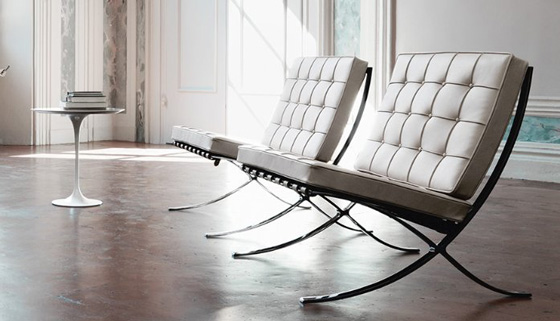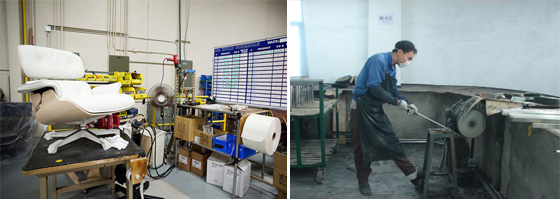
Should Interior Designers specify a knock-off (furniture, lighting or any other item) because “The client can’t afford the real thing”
Take a minute to think about this: What was your most amazing project? The one that comes “Top of Mind” within a split second of me asking you that question. Ya, that one. That restaurant or bar, that amazing home, workspace or retail store. The one project that you are most proud of and is featured all over your web-site, your portfolio and your social media. It even got published in….
OK, now, imagine you’re relaxing one Sunday morning, coffee in hand, browsing your favourite design magazine and there it is. Yup, there’s a bar in__________ being featured that is exactly the same as the one that you designed for your client. The exact same floor plan, the same flooring, the paint, the seating, the tables, every single light fixture as far as the eye can see. It is an exact “replica” of what you created and it is already the most popular bar in all of__________. A raving success.
“Wow! How dare they! Those were my ideas. I spent weeks working on that concept. What kind of a person would do that?” Well sorry, but there is nothing you can do about it. It’s not like they broke the law or anything….They’re really sorry, but………….”The client couldn’t afford an Interior Designer….”
And, so it goes. The client can’t afford to pay an interior designer dozens of hours of billable time, so they hired someone to copy your ideas and it was all accomplished in a fraction of the time, at a fraction of the cost.
Now, you’re working with a client and they can’t afford that real Eames shell chair, Noguchi table, Saarinen table. They like the look of a Tom Dixon Beat Light and the Flos Arco, but it just isn’t in the budget. What do you do? I’m going to suggest that as a Carrier of the Torch of Design, you steer them towards something that is both unique and affordable, but not a blatant knock-off of something that they are not authorized to re-produce. There is an endless selection of amazing products that are affordable, well made and designed by talented people who would love to have your business.
Many will say “it is in their best interest…. They sells the originals at their store, so they have to take that stance….”
Several years ago, N.O.O.D. (aka, New Objects Of Desire) came to Canada and for those who are not aware, their business was selling knock-offs. During that time, I had many people come to me to ask “how do you feel about this new store selling knock-offs? and ” You must be worried about how it will affect your business” among other comments. My response was always the same: Doing what they do is not a good story and for the life of me I just don’t see it as a successful business model. Am I worried? No. Why? Well, let me tell you. My customer is not their customer. My customer will never be their customer. In general, you don’t covet something and purchase the real thing and then decide to go and buy a knock-off of something else. Now then, let’s look at their customer. Could they potentially become my customer? Often people buying knock-offs have no idea what it is that they’re buying. It is possibly recognizable to them, but they have no idea of the story that goes along with it. They know nothing of the designer, the design process, the material selection, the hours of prototyping, the changing of little details to make it just right.
Anyone can take someone else’s design, email some pictures, CAD drawings or whatever to China and have it produced at a lower cost than it can be made in North America, Italy, Spain, Denmark or anywhere else in the free World. Every few months, someone in China will likely find a way to do it a little bit cheaper than before.

Fake (top) vs Real (bottom) Barcelona daybed
Something very similar happened to the music industry and it amazes me how it has come full circle and now through technology, the artists are being paid for their art. We probably all know someone who “downloaded” a song to listen to without paying for it. Whatever your stance is on that, what I think anyone can agree on is that if someone downloaded music and was producing CD’s with that music and selling them at a profit, that is wrong.
Why is it that when it comes to furniture, lighting and Louis Vuitton purses, we seem to turn a blind eye? If someone wants to take on the task of making themselves a reproduction of an original design for their own use, I personally don’t have an issue with it. Many of these designs are complicated and very challenging to make, so I actually admire you for making the effort. But, if you decide to have that original design mass manufactured for re-sale, that is entirely different.
We have moved beyond a time when downloading music without paying was viewed by many as being ok. I look forward to a time when we view furniture, lighting and other design items the same way.
I am not all down on China. They produce a product that is affordable to many. That business is not going away. But, I have crossed paths over the last few years with umpteen young, (and Older) talented, up and coming industrial designers and every one of them would love to have their ideas produced and sold to the masses. You don’t have to look far to find amazing things that cost the same as your knock-off chair/light/table/sofa….
These products already exist and if you support the companies that support this next generation of designers, then maybe, one day, that cool chair that you got an amazing deal on might just become a collectable.

Actual Herman Miller factory vs knock-off factory
I honestly believe that if the owners of NOOD had taken all their money and their Chinese manufacturing relationships and produced the original designs of the next generation, they would still be in business.
This is why I implore my colleagues in the design business, to please stop supporting the industry that knocks off designs that they are not authorized to produce and in the name of profit, reduces them to the lowest common denominator which is price. These pieces have no value from the moment they enter your client’s home. They’re nothing more than poor imitations of something that should make you feel something. You are not helping your clients and I actually think you are doing yourselves and your clients a dis-service by supporting this practice.
Like my favourite piece of art, so many of the pieces that we represent honestly make me weak in their presence. The real pieces just so happen to get better with age.
Sit down across from anything that intrigues you and study it. Look at every single detail, tuck and fold, stitch or button. The grain of the wood, the way the finish is applied, the way the light hits it from different angles. Sit in it or on it. Every detail was considered during the design process and I guarantee that what you’re looking at was the result of a lot of painstaking consideration.
I’ll leave you with this: A little while ago, I was at “The Fabulous Find” the most amazing vintage furniture shop in Victoria, and Greg was talking to a potential customer and that person was commenting on an amazing vintage chair and said “It just isn’t super comfortable” and Greg said, “Ya, but look at it”
That really sums it up for me.
You just don’t get that from a knock-off and that is why the real thing costs more.
Thanks for listening.
—
This post was written by Ross Taylor – industry peer, CEO of Gabriel Ross and friend of Inform.